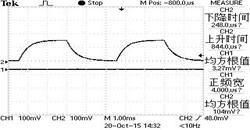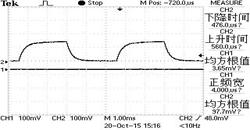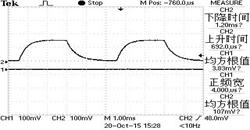|
|
|
|
|
Time-Resolved Spectrum Detection
System |
|
|
The typical application of time-resolved
spectroscopy is by measuring the fluorescence
lifetime of atom and molecule radiation to
obtain the excited state lifetime, transition
probability, collision cross section, reaction
speed, energy transfer and other relevant
information.
This system is based on the time domain analysis
system of the fluorescence lifetime testing
application. It works by using pulse laser to
excite samples to generate fluorescence
radiation, then measuring the evolution relation
of the fluorescence intensity over time. Usually
the fluorescence lifetime is at nanosecond
level, some phosphor and rare earth compounds
samples have longer radiation lifetime is up to
millisecond level. |
|
|
|
|
 |
|
■
System
Configuration |
|
|
|
Diode laser |
Modulation available; |
|
Monochromator |
Wavelength range 200-1100nm; |
|
Photoelectric probe |
Si substrate photoelectric
detector, reaction rate 1ns; |
|
Oscilloscope |
Acquisition rate 50MHz;
|
|
Others |
Sample, sample stage,
photoelectric detector,
signal projector, guide
rail, fiber, fiber holder
and light barrier; |
|
|
|
|
■
Detection
Signal |
|
|
 |
 |
 |
|
Nd3+ fluorescence lifetime measurement
in YAG |
Nd3+ fluorescence lifetime measurement
in YLF |
Yd3+ fluorescence lifetime measurement
in YAG |
|
|
|
|